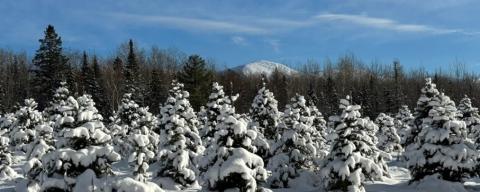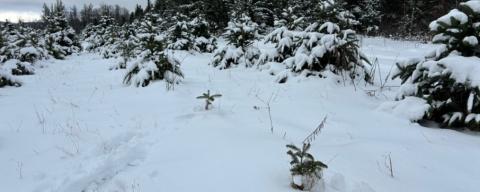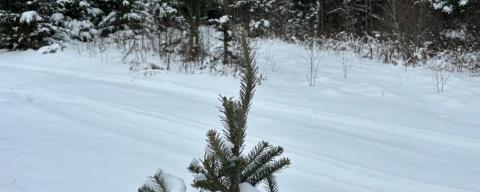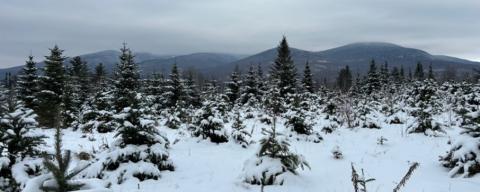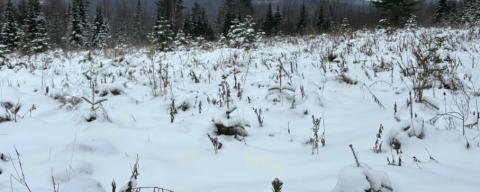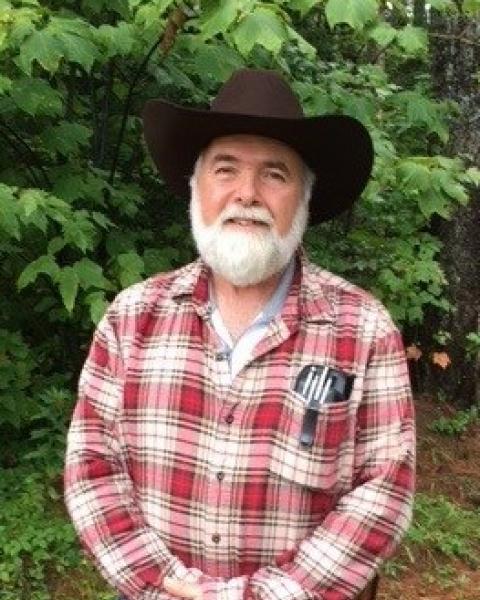Christmas Trees
There are a number of farms here in our county, and across our state, that grow Christmas trees. Some of these are harvested and delivered around the region, and others are choose and cut your own. This is a wonderful tradition that can involve the entire family and get everyone outdoors to enjoy the sights, sounds, and scents of the evergreen forests. Some even like being in the Christmas tree farm so much their thoughts turn to possibly creating one of their own. So, let’s think about all that goes into growing Christmas trees.
Growing and selling Christmas trees certainly isn’t something that just happens, and realizing an income isn’t going to begin right away. This is especially true if you are starting a new tree farm right from the seedlings. This is going to require a significant commitment of time, energy, and money to get to that marketable product designed to entice people to come to your farm.
Growing Christmas trees is much like growing vegetables in your garden. You must be concerned with soil type and condition, insects, diseases, weed control, moisture, shearing, and shaping the trees. Location or aspect of the site is also something that must be considered. Typically, here in northern New England, try to avoid low-lying areas that are prone to late spring frosts, and pick sites that are easily accessible for the required maintenance and ultimately the harvest.
Access and spacing are considerations that may seem pretty basic at the outset, but the decision made today is one that you will likely have to live with for years, or even decades, to come. Plan access to allow for the best growing conditions for your seedlings, as well as to accommodate the mowing, harvesting, and other maintenance of the trees. Edges of the field along forest boundaries where shade from the forest trees may affect the growth of your seedlings, are good places for roads.
Spacing your trees at 5 x 5 feet will allow for more than 1700 trees per acre but may turn out to be a bit tight for maintenance and harvesting. A 6 x 6 foot spacing will allow for more than 1200 trees per acre, provide more room for growth and maintenance, but still may be a slight bit tight once the trees are at their desired size.
Maintaining your trees is more important than most might think and begins very early in the process. Even newly planted trees will require a little tending. It is important to check for, and cut out, double tops, broken or damaged limbs, and keep an eye out for any conditions caused by insects or diseases.
Soils and topography are also very important things to consider. Old pastures and abandoned agricultural land are typically ideal sites to start a tree farm. Not having to harvest trees and remove stumps to get you started can help minimize the initial investment and help to make any desired economic gain from your plantation possible. A gently rolling site will provide better air drainage which should help to prevent frost and certain disease issues.
One basic factor to consider is that trees simply won’t grow well on wet sites. Although some species are touted to ‘tolerate’ wet conditions, the reality is that every tree does best on well-drained soils. Most tree species used for Christmas trees have specific site and soil requirements for optimal growth and development. Soil pH is another important factor to consider. As a general rule, Balsam and Fraser fir do best in a pH range of 5.0 to 6.0. A soil test will help to determine the quality of your existing soil, as well as to provide levels of lime and fertilizer required to bring the site to an adequate fertility level for the trees that you wish to plant.
The species grown as Christmas trees don’t often naturally regenerate in open fields and are therefore at a disadvantage when it comes to competing with grasses and weeds for sunlight, nutrients, and water. It becomes essential to limit this competition, especially when the seedlings are young and small. Site preparation is most economically accomplished using herbicides. These may be applied in strips for rows, or spots for individual trees, before planting. Insects may also become a factor to consider and control, especially as the trees grow closer to the size and age to be harvested.
Spring is the most ideal season for planting seedlings here in New Hampshire. The best results will most often be achieved when planting occurs as soon as the frost is out of the ground, and before the buds start to open. The cool temperatures and moist soils at this time will help to reduce transplant shock of the new seedlings. Carry small quantities of seedlings into the field at a time, taking every precaution to keep the roots moist throughout the process. Dig holes deep and large enough to ensure that the entire root system can be covered, not crowded, and not crunched. Place the seedling deep enough to completely cover the root collar, but not by any more than ½ inch. Tamp the soil firmly around the seedling to avoid air pockets, and water sufficiently.
Soil test information and packets are available at your county UNH Cooperative Extension office.
Seedlings are typically available from the New Hampshire State Forestry Nursery and from various private nurseries. Additional information may be provided by contacting your County Forester at your local UNH Cooperative Extension office.
I sincerely hope you all have a safe and Happy Holiday Season!
Sources: Establishing the Christmas Tree Plantation, University of New Hampshire Cooperative Extension
Christmas on the Farm: A How-to For Christmas Tree Growers; Northern Woodlands, November 26,
2012, by Patrick White, Winter 2012
All photos courtesy of Oleson’s Tree Farm, Jefferson, NH
